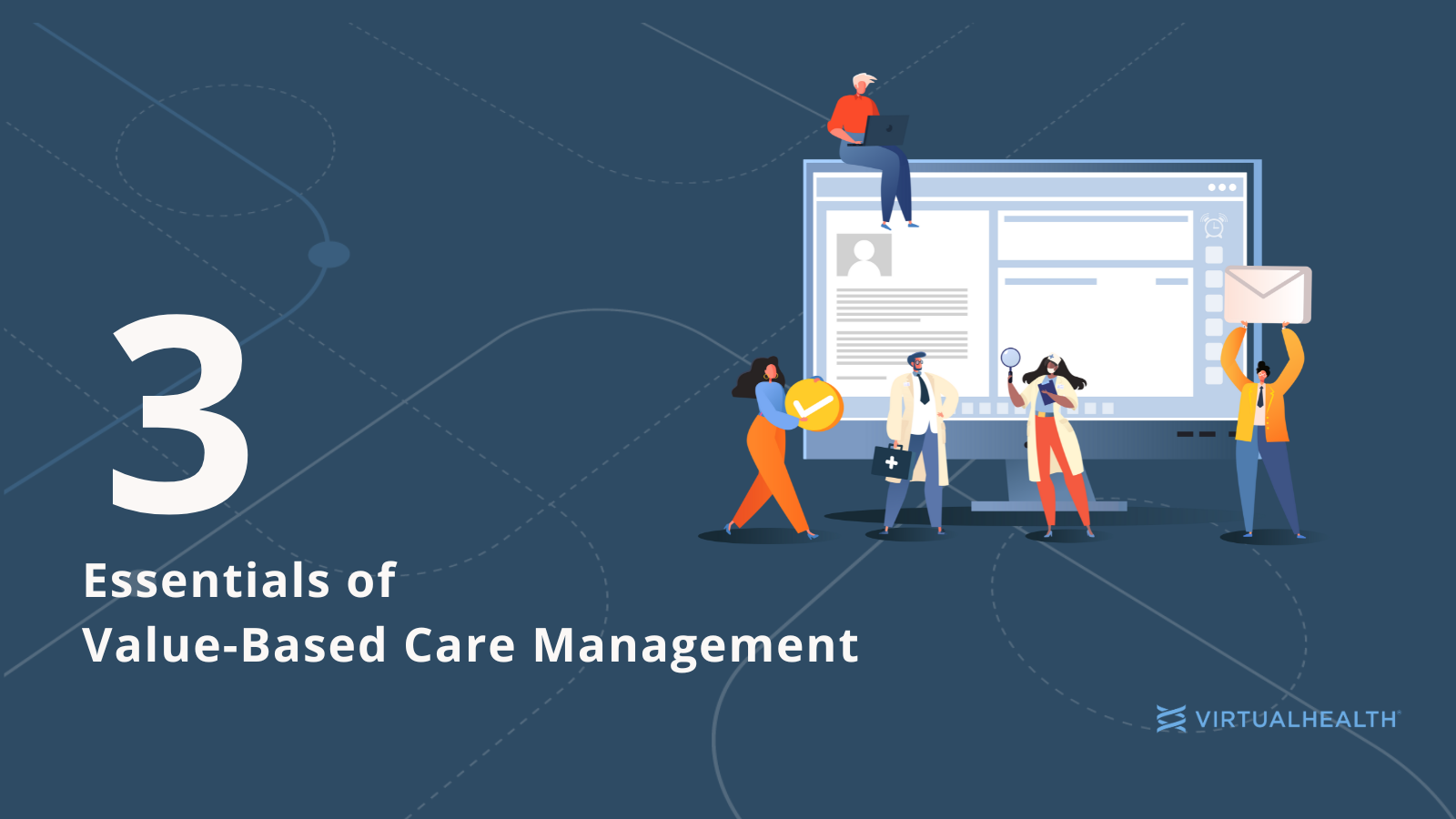Your patients (health plan members) are the driving force behind everything you do. And with the gradual shift over the past two decades from volume-based, fee-for-service payment models to value-based care and managed care models, your team is finally able to focus on each patient as a whole. The only thing that could possibly get in your way? Spending too much time on the administrative responsibilities behind care management. Fortunately, there are solutions that can help improve the quality of individuals’ health outcomes and increase care team efficiency at the same time. Moreover, this efficiency also results in reduced staff burnout. The right care management platform has three essentials that empower care team members to deliver true value-based care – all while improving efficiency, reducing costs, and providing a higher quality of life for patients.
1. A Great UX Empowers Care Team Staff to Easily and Effectively Provide Care
Simply put, a care management platform should empower healthcare teams to more easily provide care that leads to better patient outcomes. To accomplish this, it should have a user experience (UX) that is simple, intuitive, and easy to learn and navigate. A good UX boosts usability and accessibility while also promoting faster adoption. A great UX feels natural and familiar, like the software and apps you use every day in your personal life. For a care management platform to effectively give care managers more time in their day to focus on what matters most (patient care), it should:
- Hide unnecessary/unused fields and tabs
- Provide an easy-to-use navigation that anyone could jump right into and start using
- Keep all features and functions within just a few clicks away
- Support transparency and communication across the care continuum (e.g., shared patient files, notes, and calendars)
- Have a simple design that drives efficiency and keeps onboarding quick and simple
When designed with ease of use in mind, the right care management platform can boost care team efficiency by up to 93% and allow for up to a 92% increase in caseloads per care manager, as we’ve seen from our users’ experiences.
2. Proactively Bridging Care Gaps with Connectivity & Smart Automations
Effective care coordination is vital to delivering value-based care, especially for specialty providers managing chronic conditions, such as renal failure, substance abuse, or diabetes. Delivering high-quality care depends on the ability of clinical team members to identify the right service, at the right time, for the right patient.
But the fragmented nature of our healthcare system complicates this “right triangle” of medicine. Think about a patient with a chronic issue who visits a new provider. If there is no interoperability between databases, or the patient’s other medical teams have not transferred files, the new provider is basically starting from scratch. On the other end of the spectrum, when a care management platform connects records and data from one care setting to the next, care teams immediately know and can easily make well-informed follow-up actions. Event-driven triggers, real-time admission, discharge and transfer (ADT) feeds, plus smart analysis and automations of risk variables can guide care plans that result in better outcomes.
For example, automated workflows can “flag” a patient who hasn’t filled a prescription or has missed an appointment, prompting a team member to reach out and resolve the situation. With HELIOS, chronic care teams have breakthrough connectivity, configurable, automated workflows, and integrated communication tools that cultivate preventive (rather than reactionary) care delivery for improved outcomes and a better patient experience.
3. Enabling Tools to Improve Patient Engagement & Quality of Life
Office visits, test results, and medical events are only a small part of chronic care management. In fact, 80% of health outcomes are driven by non-clinical factors, such as social determinants of health (SDOH). After all, if you don’t have nutritious food, it’s difficult to keep yourself healthy, and without transportation, how can you get to and from preventive appointments? An effective care management platform integrates social risk factors (e.g., loneliness, housing instability, health literacy, food or financial insecurity, lack of transportation, lack of health care coverage, etc.) with clinical records and preferred channels of communication for a complete, 360˚ view of each patient. Providers can then offer whole-patient care programs, prioritize who to engage with, and know how to best engage them.
Our clients are doing exactly that – caring for patients as a whole – through a platform that provides telehealth services, partnerships with leading community care-based organizations like UniteUs, and closed-loop reporting to ensure that the patients who need services are receiving them.
These three factors can give you a head start in simplifying a value-based care management program that will position your organization for growth, improve the quality of care and patient outcomes, and offer your care team a new level of efficiency. If you’re ready to streamline value-based care management for your organization, contact us today.

